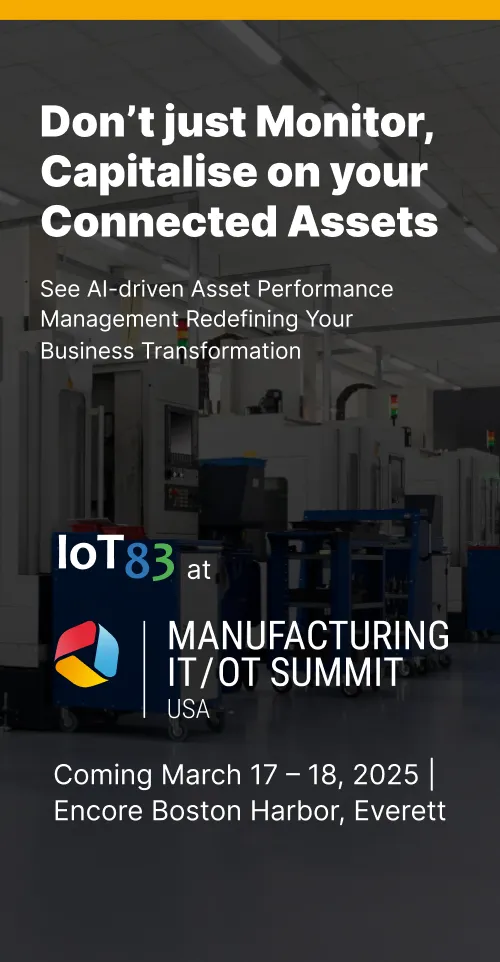How amazing would it be if you could get a real-time assessment of your products (industrial assets), like how these assets are performing during regular operations, along with the ability to predict any technical failures, anomalies in machine feedback, and most importantly, ability to turn the best value of that data into smart product analytics dashboard? This isn’t just beneficial for your organization; it also offers various options to build newer revenue systems through equipment as a service model. The latest study at Forrester found that 85% of firms in the industrial sector prioritize service-led and outcome-driven business models on top now. This is why most OEMs and enterprises are pivoting to servitization. This business model goes beyond the traditional focus on product sales, pushing companies to innovate by integrating services into their offerings.
But what exactly is servitization, and how can OEMs and enterprises harness its potential? Let’s explore this further.
What is Servitization?
To foster growth and improve revenue generation, businesses are providing additional services to their customers, evolving from solely selling traditional products. This process is called servitization. In a recent PwC Annual Global CEO survey, 40% of CEOs shared that they believe their businesses will no longer be financially viable in 10 years if they continue their current course.
Servitization is a business model transformation that enables businesses to create and capture additional value through extended relationships with their customers. They offer maintenance, repairs, operations, and even outcome-based contracts alongside or instead of traditional product sales, like insights into consumer usage routines and product performance. It reflects a strategic move from a transaction-based model to a relationship-oriented approach, emphasizing customer satisfaction and long-term engagement. It is helpful for better serving existing customers, expanding markets, and driving profitable revenue growth.
Why Do OEMs Turn to Servitization?
"Having greater access to data accelerates your learning and enhances your ability to deliver value to your clients."
OEMs are increasingly turning to servitization for several compelling reasons. This model
- deepens customer relationships
- provides OEMs with invaluable insights into product performance and customer needs
- helps in building never revenue streams

The primary driver is the pursuit of sustainable revenue streams. Unlike one-off product sales, services provide continuous revenue, enhancing financial stability and predictability. With a product-centric business model, OEMs can only focus on product sales, related technology value, feature-based solutions, and transactional models. Whereas the Service-Centric Model can help you focus on customer needs, boost user experience and further provide usage-based solutions.
"Being the first in your industry can position you as a leader and allow you to capture a significant market share."
Additionally, servitization allows OEMs and enterprises to differentiate themselves in competitive markets, offering unique value propositions that go beyond the capabilities of their products alone. If a business starts to adopt the latest service-based business model in the industry before its competitors, it can achieve higher revenue, capturing a greater market share.
Benefits of Servitization
The transition to a subscription-based model offers a plethora of benefits for OEMs and enterprises, including:

- Enhanced Revenue Streams: OEMs and enterprises can tap into new revenue opportunities and enjoy more consistent cash flow by offering services alongside products.
- Competitive Differentiation: Subscription based models enable businesses to stand out by offering unique, value-added services that competitors may not provide.
- Customer Loyalty: Ongoing service relationships foster deeper connections with clients, leading to loyalty and long-term business growth.
- Operational Insights: Through continuous engagement, OEMs gain direct feedback on their products, allowing for rapid iterations and improvements.
The Challenges of Servitization
A recent study by Gartner revealed that 20% of CEOs from Global 2000 companies have shown a heightened willingness to take risks and have reported increased resilience, attributing these improvements to advances in modular business redesign.
Despite its advantages, servitization is not without challenges. Transitioning from an outcome-based business model to a service-oriented model requires significant changes in company culture, systems, and processes. OEMs must invest in training, technology, and infrastructure to support service delivery. Additionally, there is the risk of cannibalizing existing product sales, and OEMs must carefully manage this transition to avoid negative impacts on their traditional revenue streams.
Architecting Servitization Solutions with AIoT

AIoT provides frameworks and guidelines that can aid OEMs and enterprises in navigating the transition to servitization. These include principles for digital transformation, innovation, and sustainable economic growth. By leveraging AIoT’s guidelines, OEMs and enterprises can:
- Develop Clear Strategies: Define a servitization vision and roadmap that aligns with the organization’s overall goals.
- Invest in Capabilities: Build the necessary skills, technologies, and infrastructure to deliver high-quality services.
- Foster a Service Culture: Cultivate a company culture that values customer service excellence, operation excellence, and product excellence.
- Innovate Continuously: Use insights gained from service operations, like APM, ARM, Field Ops, etc., to innovate both products and services.
Conclusion
Servitization represents a significant opportunity for businesses willing to embrace change and innovate beyond traditional product sales. With an AIoT platform businesses can unlock new revenue streams, differentiate themselves in the market, and produce stronger customer relationships. Transitioning to a servitization model requires careful planning, investment, and a willingness to adapt.
However, by following proven methods and focusing on building the necessary capabilities, businesses can navigate the challenges of servitization and emerge as leaders in their industries.






.jpg)

%20(1).jpg)


